 I recently spent a beautiful blue-sky day paddling on the French Broad River. (Click HERE to see some pictures of this trip) In my mind, little could be more satisfying than sitting in my kayak on a glorious fall day, a confetti of colorful leaves spilling from the sky with every gentle blow of the wind. The river became a perfect mirror, reflecting the trees dressed in their autumn splendor. Wow, what a way to spend the day! I hope you too schedule some “outside time” soon.
I recently spent a beautiful blue-sky day paddling on the French Broad River. (Click HERE to see some pictures of this trip) In my mind, little could be more satisfying than sitting in my kayak on a glorious fall day, a confetti of colorful leaves spilling from the sky with every gentle blow of the wind. The river became a perfect mirror, reflecting the trees dressed in their autumn splendor. Wow, what a way to spend the day! I hope you too schedule some “outside time” soon.
Looking up at the leaves falling from the heavens, I started seeing the occasional Monarch Butterfly fluttering by and as always, felt a rush of amazement and wonder at these small creatures.

It truly makes my heart smile to see them and having been on a 2000+ mile journey myself (thru-hiking the Appalachian Trail), I empathize with their challenges. After four or five caught my eye, I began counting them, wondering how many I might see during my ten mile journey on the river. Two years ago when I was with a group of 5th graders in Dupont State Park in the fall, in our four hours together we counted 114 Monarch Butterflies decorating the sky. Would I see that many? Several hours later, with my count just above a dozen, I knew the answer: no, I would not see that many. That got me wondering about the status of the Monarch Butterflies this year. How many would show up in Mexico? Could their numbers recover?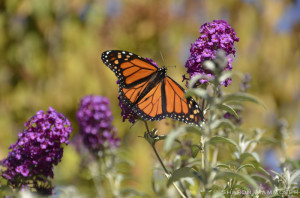
You may or may not know this but Monarch Butterflies are in serious trouble. Do you know about them and where they go for the winter? Have you heard about their decline? Do you know what makes this insect so amazing?
Every year all the monarchs in North America that live east of the continental divide (those that live west of the Colorado will head west to the Pacific Grove of southern California where they will overwinter on eucalyptus trees) will head south to spend the winter in the Sierra Madre Mountains of Mexico, a distance for some of 2500 miles! Imagine such a fragile-looking creature overcoming the wind, weather and all the other obstacles to make it this incredible distance.
The monarchs may travel as much as 100 miles in a single day, joining millions of other monarchs who have made the journey.
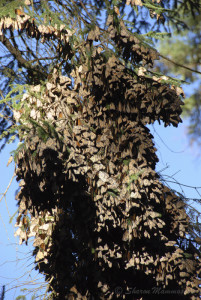
Together, these amazing insects will gather on the branches of Oyamel fir trees, waiting until March when warmer weather arrives. Then they will turn around and head north, back towards the places they came from. (Years ago I traveled to Mexico to SEE THIS! )
The most amazing part of the monarch story is that those traveling south have never been there before, yet somehow manage to locate the exact trees that all those Monarchs from previous generations have used. How they manage this is still a mystery. They have never been there and will never be there again, but yet successive Monarch populations continue to make this journey, just as they have for thousands of years.
Last year Mexico recorded the lowest numbers ever of Monarch Butterflies, with an estimated 33 million rather than the 1 BILLION that were present in 1996.
Usually covering an average of 17 acres, last year the butterflies were found in just 1.65 acres, down from 3 acres the previous year. That’s a decline of nearly 90%. So what is the reason for this drastic decline? As is true of most things in nature, the answer is a combination of factors, starting with a drought in the summer of 2012, followed by extreme cold temperatures in the spring and then a summer of unproductive breeding. Add to all of that an increase in genetically modified crops and in herbicides on those crops.
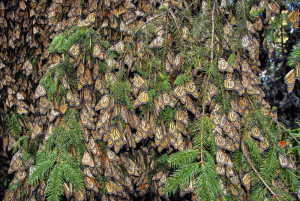
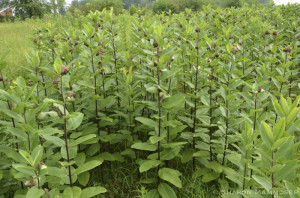
Milkweed, unlike the GMO’s, cannot survive these herbicides and is being eradicated from corn and soybean cropland across North America. In addition, there is less wild land where Milkweed might have flourished in the past and people, many whom hear the word WEED in the plant’s name, and take steps to get rid of it in their yards. Unfortunately for the Monarch Butterfly’s caterpillar, the ONLY thing they eat is Milkweed. There are over 100 species of Milkweed in the United States, though only a handful of those are native. Monarchs thankfully cannot tell the difference and will use any type of Milkweed. But not if it’s not available.

We will have to wait and see what happens to the numbers of Monarchs this winter. Hopefully they can rebound for it would be a great tragedy to lose this amazing creature. If you’d like to learn what you can do to help,CLICK HERE.

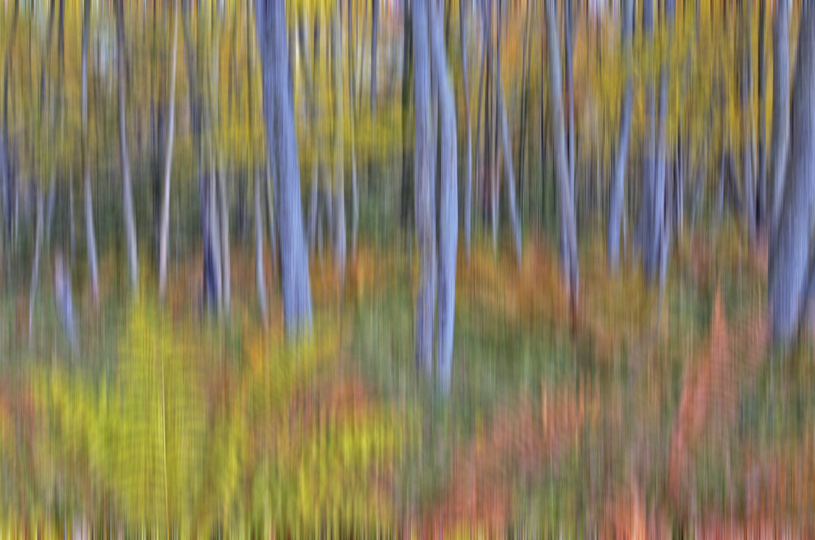
2 thoughts on “What Makes This Insect Amazing and Why it’s inTrouble”
Comments are closed.